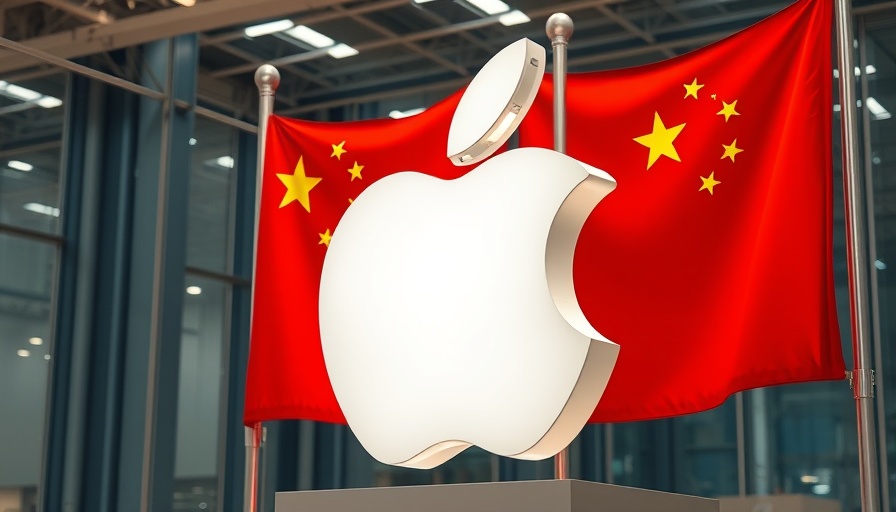
Apple's Bold Move: Relocating iPhone Production to India
In a pivotal shift for its manufacturing strategy, Apple has announced plans to transition all of its U.S. iPhone production to India by the end of 2026. This decision marks a significant departure from the company's longstanding reliance on China, a country that currently produces approximately 90% of iPhones sold globally. With over 60 million units sold annually in the U.S. alone, Apple's strategy reflects a broader trend of American companies reassessing their supply chains amid rising geopolitical tensions and trade tariffs.
The Economic Implications of Shifting Production
Over the decades, China has become the backbone of Apple's manufacturing operations, housing around 150 of the company's top 187 suppliers. This relationship has been mutually beneficial, growing alongside China's integration into the global economy. Yet, with increasing tariffs that have seen U.S. imports face taxes as high as 145% and retaliatory measures from China, the rationale behind Apple's pivot becomes clearer.
As reported, moving to India presents a hedge against these unpredictable trade policies. Currently, India imposes a baseline levy of just 10% on U.S. products, making it a favorable alternative during this period of trade upheaval. Moreover, the temporary pause on India's anticipated 27% reciprocal tariff adds a layer of economic viability to this move.
Consumer Impact and Future Predictions
For consumers, this transition may alter not only pricing but also the availability of Apple products in the U.S. market. As production processes shift, one must wonder whether these changes will lead to price adjustments or improvements in supply chain stability. Experts predict that if Apple successfully integrates its Indian production lines, it could empower the Indian workforce and stimulate local economies.
Networking and Investing in Emerging Markets
For import-export companies, this development represents an opportunity to engage with emerging markets. As firms pivot production sources, there are chances for new partnerships with Indian manufacturers. This move could open doors to diversified sourcing strategies that capitalize on developing economies and contribute to robust growth.
Risks and Considerations in the New Supply Chain
Nonetheless, the transition is fraught with risks. Establishing a strong manufacturing base in India will require significant investment in infrastructure and skilled labor. Corporate leaders must consider challenges such as delays, quality control, and potential disruptions that could arise in the transition phase. Mitigating these risks will be crucial for balancing production demands with market expectations.
Conclusion: What Lies Ahead?
Apple's strategic shift not only reflects its adaptive nature in response to global pressures but also signifies a potential reshaping of the international trade landscape. Import-export companies should keenly observe these trends, as the future of manufacturing and global trade will evolve within these dynamics. As industries realign and adjust, the opportunity to embrace innovative partnerships in countries like India could prove transformative.
Stay informed on global trade developments and consider how this transition may affect your operations. Understanding these larger trends can provide insights into navigating an ever-changing market landscape.
 Add Row
Add Row  Add
Add 




 Add Row
Add Row  Add
Add 

Write A Comment